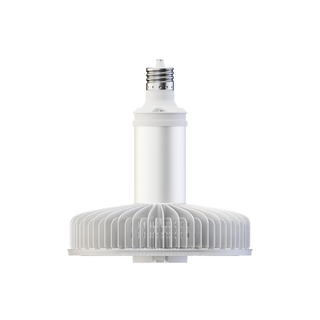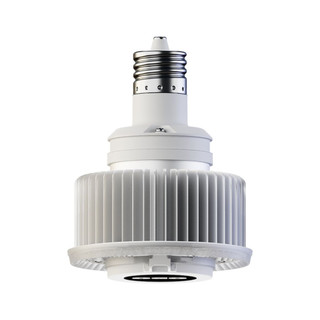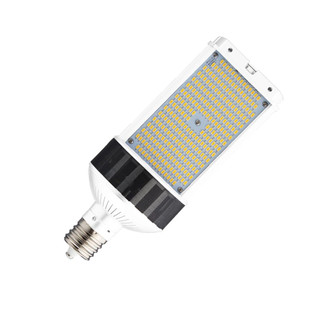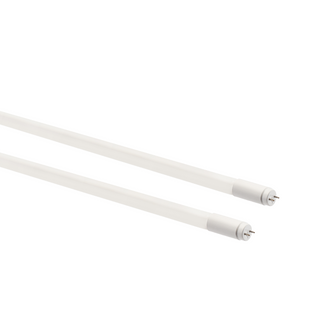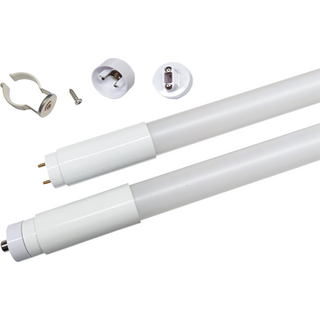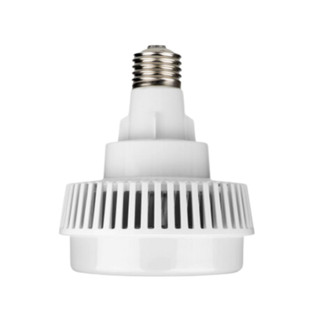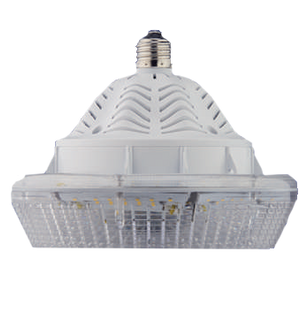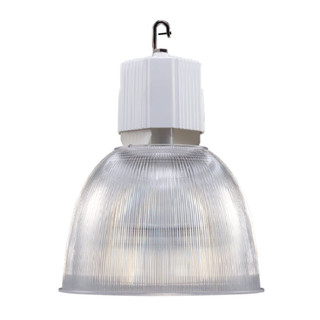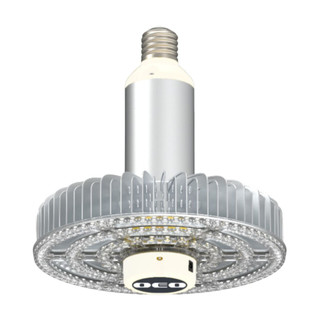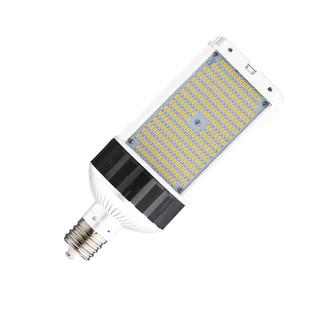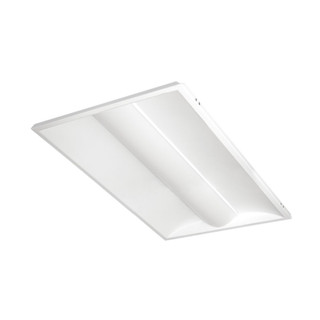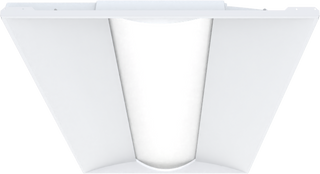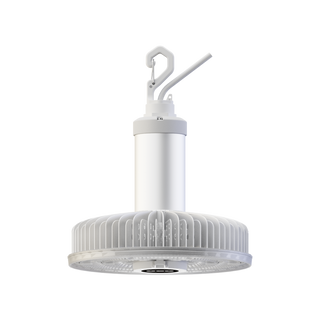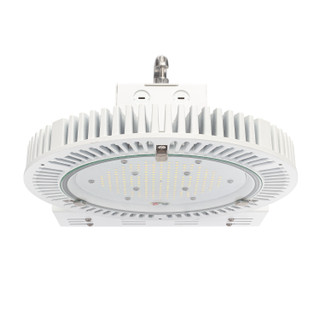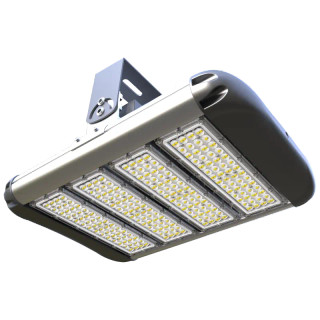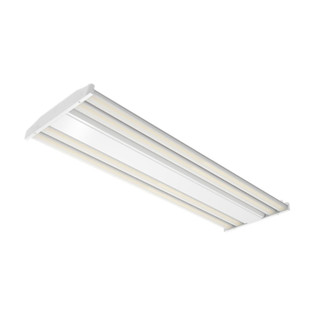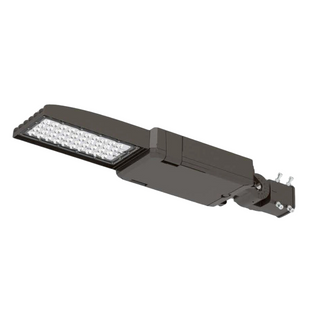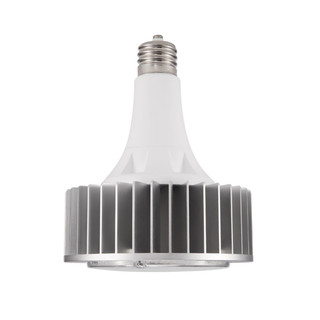
LED Retrofit Guide

There are different approaches to consider when upgrading traditional or legacy lighting systems that operate inefficient metal halide, high-pressure sodium, and fluorescent lamps (tubes and compact fluorescent lighting). Essentially, you can consider a lamp (or bulb) upgrade to LED, or a full LED fixture replacement. Whether you simply upgrade your bulbs to LED, or replace entire fixtures, each approach will provide you the LED benefits of improved lighting, durability & longevity, reduced maintenance costs, and energy savings - thus positively impacting your business operations. Additionally, high-quality LED lighting for industrial and commercial applications emphasizes energy efficiency and environmental friendliness.
Whether you're looking to upgrade by using LED lamps or do a full fixture replacement, each approach has its pros and cons. This guide will explore each LED lighting upgrade option, so that you can make an informed decision when choosing the best LED lighting solution for your facility. This guide is broken down into the following sections:
Before we begin, let us quickly cover a basic concept related to lighting fixtures: the ballast. This background will help frame our discussion as we explore the options available to you. Before LED lighting was created, lighting fixtures required an electronic device called a ballast in order for the lamps (or bulbs) to function properly. In very simple terms, a ballast regulates the electrical current that flows through a light bulb. A ballast is required for fluorescent and high intensity discharge lamps (metal halide and high pressure sodium lamps) to work properly. Without an operable ballast, these bulbs will not function. LED bulbs, on the other hand, do not require a ballast to operate. They are generally designed to work on direct line voltage vs. using a ballast. Therefore, most LED bulbs will not operate with your legacy lighting fixtures that use a ballast. However, there are some LED bulbs that have been specially engineered to function with a ballast, and some that are designed to operate both on direct line voltage AND with a functioning ballast.
With this basic understanding, let’s proceed with our discussion about your LED lighting upgrade.
Option 1: Ballast Compatible Lamps (Type A) - Simply Change Bulbs. No Electrician, No Rewiring, No Hassle.
Even though LED technology does not require a ballast, certain LED products have been specially engineered to work with a functioning ballast. These LEDs are known as our EZ LED series lamps - they're designed to operate with your ballast and are typically referred to as Type A, direct replacement, or “plug-n-play” LED bulbs. Since these LEDs will operate with your existing fixture ballast, upgrading is as simple as changing a light bulb, making this option the quickest path to achieve energy efficient lighting. Energy savings can be as great as 70% per year, saving you thousands in monthly energy costs. Return on investment is typically less than 9 months, and can be immediate when you factor in possible utility rebates. Direct replacement LED lamps for metal halide, high pressure sodium, and fluorescents are an excellent option for efficient illumination in various settings. These LED lamps are available in various sizes, lumen packages, and color temperatures, making them versatile for different applications.
The OEO EZ LED series of LED bulbs are “plug-n-play”, direct replacement LEDs for T8 fluorescents, T5 fluorescents, and 30 watt to 1000 watt metal halide and high pressure sodium (HID) lamps (includeing 400 watt metal halide LED replacements). They are available in different sizes and lumen packages to serve a variety of applications – warehouse lighting, industrial lighting, sports courts, gymnasiums, wall packs, shoebox fixtures and parking lot lighting, commercial lighting, both indoor and outdoor settings.
Pros:
- Simply change bulbs. No rewiring, no electrician, no hassle.
- The fastest way to accomplish a LED lighting upgrade.
- Can use a ballast compatible LED lamp on high voltage 480V with a functioning ballast.
- Fixtures can be re-lamped in the future vs. a full fixture replacement.
Cons:
- Requires a functioning ballast for the LEDs to operate, which can be a future failure point.
- If you want a new look with a complete fixture upgrade, this doesn’t do it.
YES! Our EZ LED technology is designed to work with your existing ballasts. Simply "plug-n-play" for your fastest upgrade to energy saving LEDs.
In many cases, a ballast failure is a result of the ignitor failing. Since the EZ LED does not rely on this component, it will still operate as long as the transformer and capacitors are working.
Once you switch to LED, the ballast factor will nearly be cut in half, depending on your ballast and LED. Also, since the EZ LED draws a lot less power than HID's and operates at 90% cooler temperatures, the life of the ballast is extended significantly.
NO. With the large reduction in wattage, the ballast isn't working as hard to operate the new EZ LED. The LEDs do not use the ignitor in the ballast - typically the first point of failure within a ballast - so even if the ignitor fails the EZ LED keeps working. If you're worried about other ballast components, look at the EZ LED HYBRID lamp as an option. This product will work with your ballast AND on direct line voltage!
The answer to this question depends on hours of operation and your utility kWh rate. We offer a free return on investment (ROI) analysis to help you evaluate the options. Typically, however, the payback period is less than 1 year, and can be immediate if utility rebates exist.
Option 2: Ballast Bypass Lamps (Type B) - Simply remove or wire around your existing ballasts before installing these LED lamps.
Since LEDs do not require a ballast to function, this category of LED bulbs will work within your existing fixtures once the ballast has been removed or bypassed. This can be done by wiring around your existing ballasts (thus abandoning it in place), or removing the ballasts from your existing fixtures. Ballast compatible LED bulbs are designed to operate on direct line voltage 120-277V. Once your ballasts have been bypassed and LEDs installed, energy savings can be as great as 70% per bulb, per year, saving you thousands in monthly energy costs. Return on investment is typically less than 9 months and can be immediate when you factor in possible utility rebates.
OEO carries a variety of ballast bypass, type B lamps designed to replace your T8 fluorescents, T5 fluorescents and 30W – 1000W HID (metal halide and high pressure sodium) lamps. These LEDs are available in different wattage and lumen packages, depending on your lighting needs and application – warehouse lighting, industrial lighting, sports courts, gymnasiums, commercial lighting, indoor and outdoor settings.
Explore Ballast Bypass Lamps:
Pros:
- A faster upgrade than a full fixture replacement.
- Eliminate the ballast as a future failure point
- Incremental energy savings vs. ballast compatible bulbs by eliminating the “ballast factor”
- Fixtures can be re-lamped in the future vs. a full fixture replacement.
Cons:
- Requires some effort in removing or wiring around your ballasts.
- If you want a new look with a complete fixture upgrade, this doesn’t do it.
Generally speaking, the answer is NO, LEDs do not typically require a ballast to function. Unless of course, they were specially engineered to function with an operable ballast, like our EZ LED series lamps. Contrary to fluorescent and HID lamps, electrical current and voltage management of an LED is not delegated to a ballast. They are controlled by a deviced called a driver.
It depends. We offer both plug-n-play (Type A) and ballast bypass (Type B) versions, plus a Hybrid Series that works both ways. The ballast does act as a surge protector, so there are benefits to keeping it in place. The advantage of wiring around or removing the ballast is an additional 5-10% in energy savings. And you completely eliminate the ballast as a future failure point.
NO. Our customers typically wire around the ballast but leave the ballast in place. This is a simple process that typically takes only a few minutes to complete. But if you prefer to completely remove the ballast, that is an option.
OEO offers many LEDs with various features. We have more product options if you can leave the lens over off the bottom of your fixtures, but we do offer models designed for fully enclosed fixtures too.
Option 3: Hybrid Lamps, Ballast Compatible AND Ballast Bypass (Type A/B) - The best of both worlds – these will work with your existing ballast OR on direct line voltage – you decide!
Hybrid LED lamps offer you the best of both worlds, they are both ballast compatible AND ballast bypass at the same time, providing you ultimate flexibility. You can benefit from a quick and simple LED upgrade simply by changing your light bulbs. And if you have a future ballast failure, or you decide to bypass ballasts in the future, these lamps will also work on direct line voltage 120-277V.
OEO's EZ LED Hybrid Series lamps are engineered to be hybrid or dual mode, and will operate either with a functioning ballast or on direct line voltage 120-277V. Use these LEDs as “plug and play”, direct replacement LEDs for T8 fluorescents, T5 fluorescents, and 30W to 1000W HID (metal halide and high-pressure sodium) lamps OR use them as ballast bypass LED replacements. These EZ LED Hybrid lamps provide you ultimate flexibility with your lighting upgrade.
Explore "EZ LED" Hybrid LED Lamps:
Pros:
- Ultimate flexibility – ballast compatible AND ballast bypass at the same time.
- Simply change bulbs for the fastest upgrade. No rewiring, no electrician, no hassle.
- Can use these LEDs on high voltage 480V with a functioning ballast (but only 120-277V once ballast has been bypassed).
- Bypass ballast option to eliminated future ballast maintenance
- Bypass ballast for incremental energy by eliminating the “ballast factor”
- Fixtures can be re-lamped in the future vs. a full fixture replacement.
Cons:
- Hybrid lamps are typically a bit more expensive than either ballast compatible or ballast bypass lamps.
- If you want a new look with a complete fixture upgrade, this doesn’t do it.
YES! Our Hybrid Series EZ LEDs ar designed to do just that. Simply change out bulbs with our EZ LED Hybrid lamps for the fastet upgrade to LED, OR bypass the ballasts in your existing fixture and wire directly on 110-277V.
Flexibility. With a the EZ LED Hybrid lamp, you get the best of both worlds. Simply change out light bulbs today for a fast and simple upgrade. If your ballasts fail in the future, disconnect and wire around them and your LEDs will continue to work on direct line voltage.
Our Hybrid EZ LED lamps can operate with both motion sensors and bluetooth network controls. Ask our expert team about the full menu of options that exist with regard to network lighting controls.
Option 4: LED Retrofit Kits - LED Upgrade for Custom Fixtures
Another option is to upgrade your existing fixture by using what’s called a LED retrofit kit. In simple terms, these retrofit kits consist of a LED light panel and driver that are designed to fit into your current fixture with supplied mounting hardware. In essence, you gut your existing fixture of the socket or tombstones, ballast(s), and reflector (if applicable) and install the LED retrofit kit in its place.
LED retrofit kits can provide up to 70% reduction in energy consumption while providing the LED benefits of improved lighting and longevity. These are great options if you have expensive custom fixtures that would be impossible to match and replace or are simply too costly to replace. Think of custom parking lot fixtures, ornate post top fixtures, and other decorative style lighting fixtures where a LED lamp or fixture replacement is not feasible.
The OEO Green LED is a retrofit type product that comes in custom wattage and lumen packages, and options that can be used on standard line voltage 120-277V or high voltage 480V.
Explore LED Retrofit Kits:
Pros:
- Upgrade expensive custom fixtures to LED without a full fixture replacement.
- Benefit from all LED benefits such as energy savings, improved lighting, and durability.
- Various wattage and lumen packages are available.
- Options to use these LEDs on standard line voltage 120-277V or high voltage 480V.
Cons:
- Requires more installation effort than a simple lamp replacement.
A LED retrofit kit is a set of components that will upgrade your existing lighting fixtures to LED. The kit typically includes a LED driver and LED ligth panel, as well as any necessary mounting hardware.
LED retrofit kits can be a good choice for updating lighting without changing the fixture or hiring an electrician. Often we see retrofit kits used to upgrade ornate or custom designed lighting fixtures that would be cost prohibitive to replace.
The benefits of LED retrofits include energy efficiency and cost savings, longevity, environmental benefits, improved light quality, instant light, dimmability, reduced heat emissions, and more.
Most of our LEDs are rated for over 50,000 hours, and don't burn out "catastrophically" but slowly fade over time. LEDs should last over 6 years if they're used 24/7 and closer to 12 years when used 12 hours per day.
Option 5: LED Fixture Upgrade - Replace your existing fixtures with a new LED luminaire
The last option to upgrade your legacy, inefficient lighting is to consider full fixture replacement. With this approach, you would completely remove your existing fixtures and install a new LED luminaire (commonly referred to as a fixture) as a replacement. The LED benefits are the same – up to 70% reduction in energy consumption while improving light output, LED longevity, and decreased maintenance costs.
New LED fixtures are a great option if your goal is to achieve a fresh, more modern look by replacing your old lighting fixtures. While pricing on LED fixtures has come down significantly over time as LED technology has matured, it still can require a significant labor expense to remove old fixtures, install and rewire new. OEO offers a wide variety of LED lighting fixtures, including options for both indoor and outdoor lighting.
Exlore LED Luminaires:
Pros:
- Offers completely new lighting system with fresh, more modern look
- LED benefits such as energy savings, improved lighting, and durability.
- Wide variety of lighting styles, wattage and lumen packages, etc.
Cons:
- Requires electrician and / or labor to install and rewire new fixtures.
- Requires removal and proper disposal (environmentally friendly) of fluorescent, metal halide, or high pressure sodium bulbs and fixtures.
- Most of today’s LED fixtures are integrated with the LED lighting diodes, so when they eventually fail a new fixture replacement will be required (vs. re-lamping). OEO does offer fixture options that do not have integrated LEDs and can be re-lamped in the future.
The benefits of upgrading traditional lighting ot LED are countless. They include: energy and cost savings, longevity, reduced maintenance costs, improved light quality, reduced temperature emissions, etc.
That depends. Often a LED lamp upgrade is the fastest and simplest way to upgrade your existing lighting systems to LED. However, if you're looking for a new lighting system with a fresh, modern look then a fixture upgrade might be your best bet.
LED luminaires (commonly referred to as fixtures) are integrated lighting systems in that they contain the housing, LED diodes or chips, and the LED driver. If one component of the luminaire fails, then it often makes sense to replace the entire luminaire. However, if you upgrade your lighting using LED bulbs (or lamps), then a simple lamp replacement is all that's needed when that LED does fail someday.
LED fixtures shouldn't last longer than LED bulbs. Both are typically rated for 50,000 hours of use or more.
